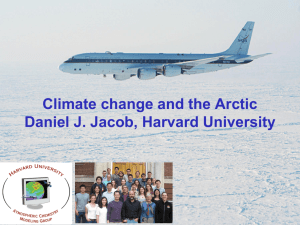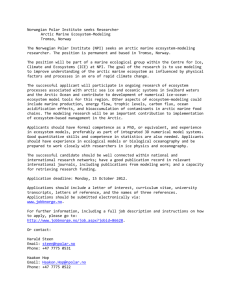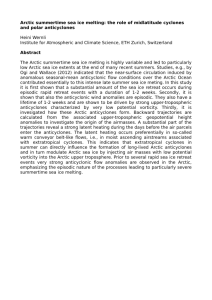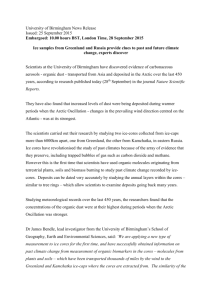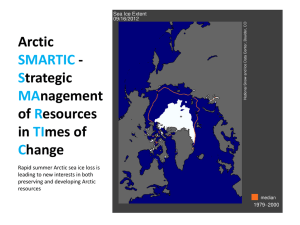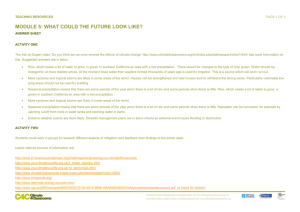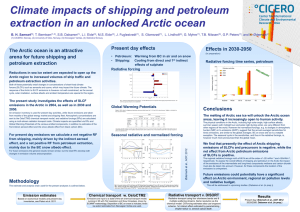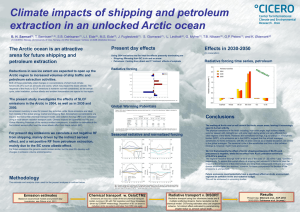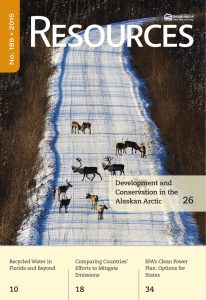science the THE SCIENCE
advertisement
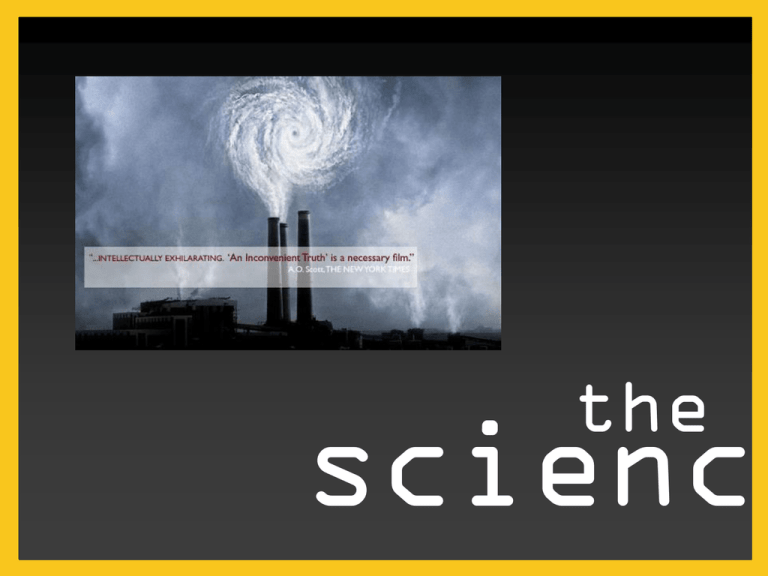
THE SCIENCE the science emissions rise Emissions of CO2 from fossil-fuel bu rapid rise since 1950 Variations of the Earth’s temp risetemperature for the surface past 1,000 years The last 160,000 ice cores years (from ice cores) and the next 100 years Projected changes in annual temperatures for th projected temp rise IPCC 2007- Probable temperature rise between 1.8oC and The MetOffice. Hadley Center for 4oC by 2100. Possible temperature rise between 1.1oC and Climate Prediction and Research. 6.4oC. Natural factors cannot explain recen not volcanoes or sun spots The MetOffice. Hadley Center for Climate Prediction and Research. Recent warming can be simulated when man-made factors are included human emissions The MetOffice. Hadley Center for Climate Prediction and Research. Projected Patterns of Precipitation precipitation changes Precipitation increases very likely in high latitudes Precipitation decreases likely in most subtropical land regions From Summary for Policymakers, IPCC WG1 Fourth Assessment Report Arctic summer sea-ice could disappear by arctic ice Arctic summer sea-ice could disappear by Arctic ice Deforestat ion Deforestation S. Bahia (Brazil) 1945 Deforestat ion Deforestation S. Bahia (Brazil) 1990 Competition for land Competition for Land Croplands & pasture-lands now cover c.40% of world land area Cities, roads, & airports now cover 2% of world land. The geography of water Water Stress stress Changing disaster patterns: weather related disasters doubled over the past 2 decades increase small- and medium-scale disasters more uncertainties Disaster trends 400 300 200 100 0 ‘9 ‘91 ‘9 ‘93 0 geo- 2 physical ‘9 ‘95 ‘96 4 epidemics, ‘9 ‘98 7 insect infestations ‘9 ‘00 ‘0 ‘02 9hydro- 1 meteorological ‘0 ‘04 3 ‘0 ‘06 5 Source: CRED Increased species extinctions Extinctions Rising Sea Levels Sea level rise • sea level rise will bring large coastal areas at risk • salt water intrusion threatens water supply and food security • impacts already being felt particularly during storm surge Climate change projections have changed dramatically recently • Arctic summer sea ice reached record minimum levels in 2005, 2007 and 2008, 80 years before CC models predicted it • Jim Hansen re-modelled max viable CO2 level compatible with human civilisation as 350ppm. • We’re already at 384ppm. • Current campaigns are for between 450ppm - 550ppm Climate change projections have changed dramatically recently • Rajendra Pachauri, IPCC Chair stated Sept 08: “the very latest science demonstrates that we need a fundamental change in our carbon habits by 2012, or the earth’s carbon feedback loops will be out of control.” • He also stated: “the latest science now says a 2m sea level rise will happen this century unless there is an early major reduction in our emissions.” • International Scientific Survey of the Arctic sea in August 2008 reported a “boiling ocean”: hundreds of thousands of funnels of methane bursting out of the sea. These are coming from cracks in the previously frozen sea bed, due to average arctic temperature increase of 4oC Climate change projections have changed dramatically recently • UK Met Office’s Hadley Centre warn that cutting global emissions by 3% a year from 2010 offers the only possible hope of avoiding a global temperature rise of more than 2oC • Tyndall Centre reviewed CC models, incorporating rising global emissions since 2000, and carbon feedback. Conclude that unless dramatic reductions in GHGs take place urgently, we are committed to a catastrophic 4oC rise • This will leave most of Africa uninhabitable and much of the Indian sub-continent incapable of growing crops, leading to multiple global conflicts and displacement of billions of people. Climate change projections have changed dramatically recently • Climate scientists are urgently re-modelling CC tipping points & carbon feedback loops, fearing that they may happen much earlier. • Tipping points include the rapid melting of glaciers; sudden collapse of the Greenland & West Antarctic ice sheets; collapse of the Gulf Stream & El Niño; reversal of the Indian & West African monsoons; rapid desertification of the Amazon and Siberian & Canadian forests • Carbon feedback includes the rapid release of methane and carbon dioxide from permafrost, frozen sea beds, soil, forests and the oceans • Sir Nicholas Stern, Oct 2008: “The only way out of the current global financial crisis is to bring low carbon technologies to the top of the agenda.” UK Met Office: world heading for 5-7oC rise “Business as usual” means: • mass extinction • devastating ocean acidification • brutal heat waves • sea level rise 1 to 2m by 2100 • >100 million env refugees • >1/3 planet desertified • ½ the planet in drought • loss of all glaciers providing water to a billion people


